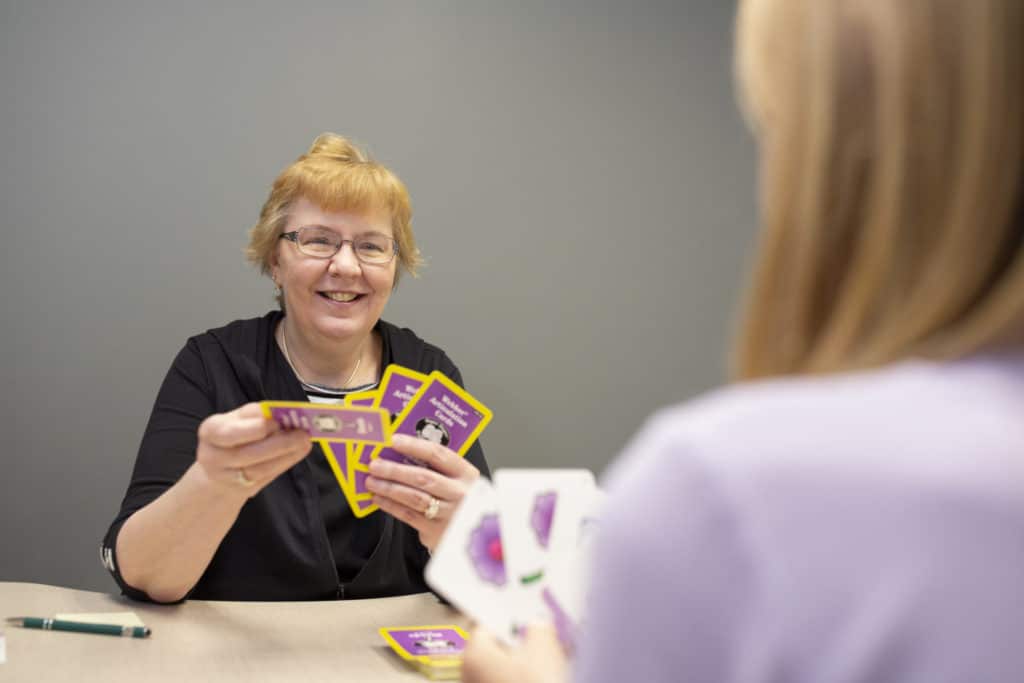Before a child starts to say actual words, they are communicating by interacting with those around them through shared attention in activities, like pat-a-cake and peek-a-boo. Before children can speak, they learn to respond, take turns, and initiate social and communication interactions. It’s important to observe these interactions to gauge where your child is at and whether they may be experiencing difficulties, as those could be signs of communication disorders, autism, or other issues.
Below are some of the early communication milestones that parents should expect their child to meet:
- Smiles at people (birth–3 months)
- Coos and babbles when playing alone or with parents (4–6 months)
- Giggles and laughs (4–6 months)
- Uses sounds and gestures to get and keep attention (7 months–1 year)
- Points to objects and shows them to others (7 months–1 year)
- Imitates different speech sounds (7 months–1 year)
- Uses a lot of new words (1–2 years)
- Asks who, what and where questions, like “What’s that?” “Who’s that?” and “Where’s kitty?” (1–2 years)
More milestone information is available at American Speech-Language-Hearing Association (ASHA) website.

What is Autism?
Autism Spectrum Disorder (ASD) is a developmental disorder of variable severity that is characterized by difficulty in social interaction and communication and by restricted or repetitive patterns of thought and behavior, interests or activities. While there are not any definitive medical tests to diagnose ASD, there are specific developmental markers that strongly suggest the possibility of ASD as young as 12–15 months of age.
To help detect autism before its typically diagnosed, families should look for these following early signs of autism (from 9 to 16 months of age):
- It’s hard to get baby to look at you.
- Baby rarely shares enjoyment with you.
- Baby uses little or no use of gestures such as show and point.
- Baby does little or no imitating of other people or pretending.
- Baby has excessive interest in particular objects or activities.
- Baby is more interested in objects than in people.
- Baby shows unusual movements of hands, fingers, or body.
Click on the following link to go to www.AutismNavigator.com for Specific information about early red flags for autism as well as 16 early signs of autism by 16 months.
A formal diagnosis of ASD can often be made reliably by 24 months—and progress is being made to do so at even younger ages. Yet the average age of diagnosis is 5 years or even later. This gap is concerning because the greatest impact of intervention on reducing the challenges of ASD occurs before age 3. This means that many of the children with ASD miss the most critical time for treatment, when the brain is pliable and in its most rapid period of growth.
The early signs of autism can have a cascading effect on brain development and can lead to significant social, language, and cognitive deficits—as well as challenging behaviors—if they’re not caught early. Without interest in other people, children have limited opportunities to learn. This is especially important between ages 0 and 3, when the majority of brain development is occurring. However, a child’s life path can be changed with early identification and intervention for autism. Intervention can help children notice and interact with other people, opening up their opportunities for learning.
At Windom Area Health Rehabilitation Services, we have both Speech Therapy, Sensory Integration Therapy and Occupational Therapy that can help with healthy progress in communication and interactions. To learn more Click Here or to schedule an appointment, call 507-831-0634.
By Joann Anderson, CCC-SLP, Speech Language Pathologist

